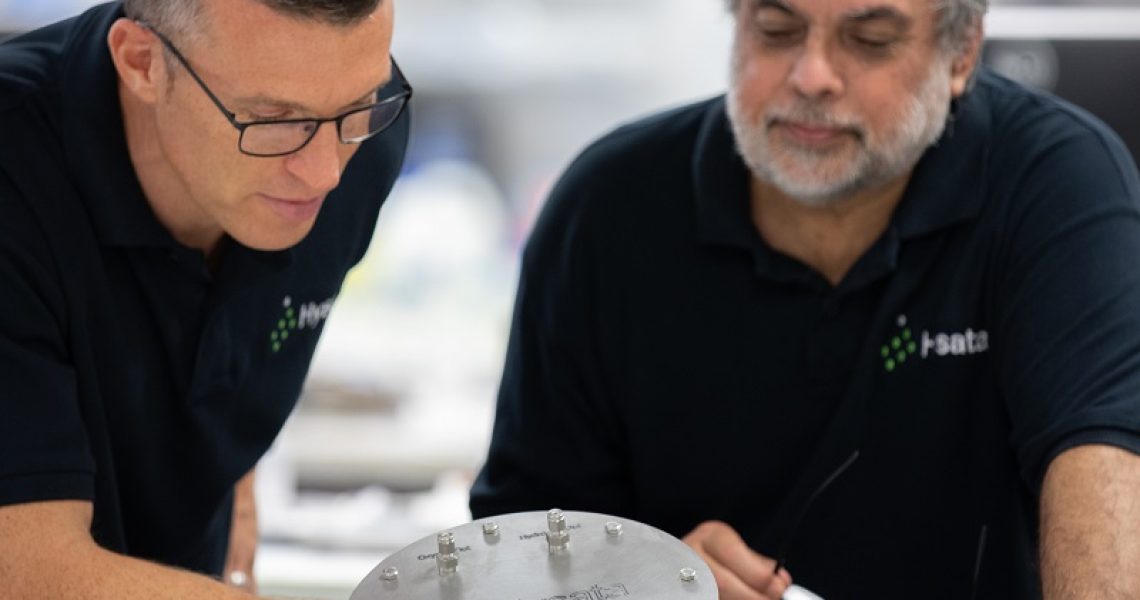Hysata’s world-leading hydrogen electrolyser technology has been recognised on the global stage with ground-breaking research published today in top tier peer-reviewed scientific journal Nature Communications.
The research confirms Hysata’s ‘capillary-fed electrolysis cell’ can produce green hydrogen from water at 98% cell energy efficiency, well above International Renewable Energy Agency’s (IRENA) 2050 target and significantly better than existing electrolyser technologies, enabling a hydrogen production cost well below A$2/kg (US$1.50/kg).
Green hydrogen is vital for decarbonisation of hard-to-abate sectors like steel, heavy transport and chemicals. The Energy Transitions Commission expects demand for green hydrogen to grow to 500- 800 million tonnes per annum by 2050 to meet demand in these sectors, creating a new multi-trillion-dollar industry.
Currently however, green hydrogen is too expensive to compete with fossil fuels, due in large part to the low efficiencies of existing electrolysers. Hysata’s ultra-high efficiency electrolyser will make green hydrogen competitive years earlier than generally assumed, accelerating global decarbonisation and increasing energy security.
The technology was invented by scientists at the University of Wollongong and is now being commercialised by Hysata, with backing from IP Group and the Clean Energy Finance Corporation (CEFC).
Paul Barrett, CEO of Hysata, said the company is on a clear pathway to commercialise the world’s most efficient electrolyser and reach gigawatt scale hydrogen production capacity by 2025.
“The global momentum towards net zero is creating a massive opportunity for green hydrogen and electrolysers. Economics will ultimately determine which technologies win, and with our world-beating efficiency, Hysata is well placed to lead in this major new global market.
“Our electrolyser will deliver the world’s lowest hydrogen cost, save hydrogen producers billions of dollars in electricity costs, and enable green hydrogen to outcompete fossil fuel-derived hydrogen.
“Our technology will enable hydrogen production of below US$1.50/kg per kilogram by the mid-2020s, meeting Australian and global cost targets much earlier than generally expected. This is critical to making green hydrogen commercially viable and decarbonising hard-to-abate sectors.
“Hysata has some of Australia’s brightest minds working together to position Australia as a leading manufacturer and exporter of electrolysers, with plans underway to build a pilot electrolyser manufacturing plant and employ dozens of new highly skilled specialists in 2022.
“Green hydrogen is forecast to be a trillion-dollar industry with the backbone of this industry being the electrolyser. Given the urgency to reach net zero, we are gearing up to scale up as quickly as possible. The elegant design of our electrolyser is perfectly suited to mass production.”
This significant step change in hydrogen technology is on track to accelerate the global hydrogen economy and drive down the cost of green hydrogen production in Australia and globally, positioning Australian as a leading manufacturer of electrolysers and producer of green hydrogen.
Gerry Swiegers, Chief Technology Officer at Hysata said the overall design of the Hysata electrolyser system was simpler than existing technologies.
“Electrolysers have been around for 200 years, however the large amounts of renewable electricity required to produce green hydrogen and the overall cost of electrolysers today has prevented large-scale uptake of green hydrogen.
“Hysata’s overall electrolyser system has been designed for ease of manufacturing, scaling and installation, delivering 95 percent overall system efficiency, equivalent to 41.5 kWh/kg, compared to 75 percent or less for existing electrolyser technologies. For hydrogen producers, this will significantly reduce both the capital and operational costs to produce green hydrogen.
“Hysata is proud to be at the forefront of this technology innovation and introducing an entirely new category of electrolyser that is as monumental as the shift from the internal combustion engine to electric motors,” Swiegers concluded.
Read the full Nature Communications paper here.

